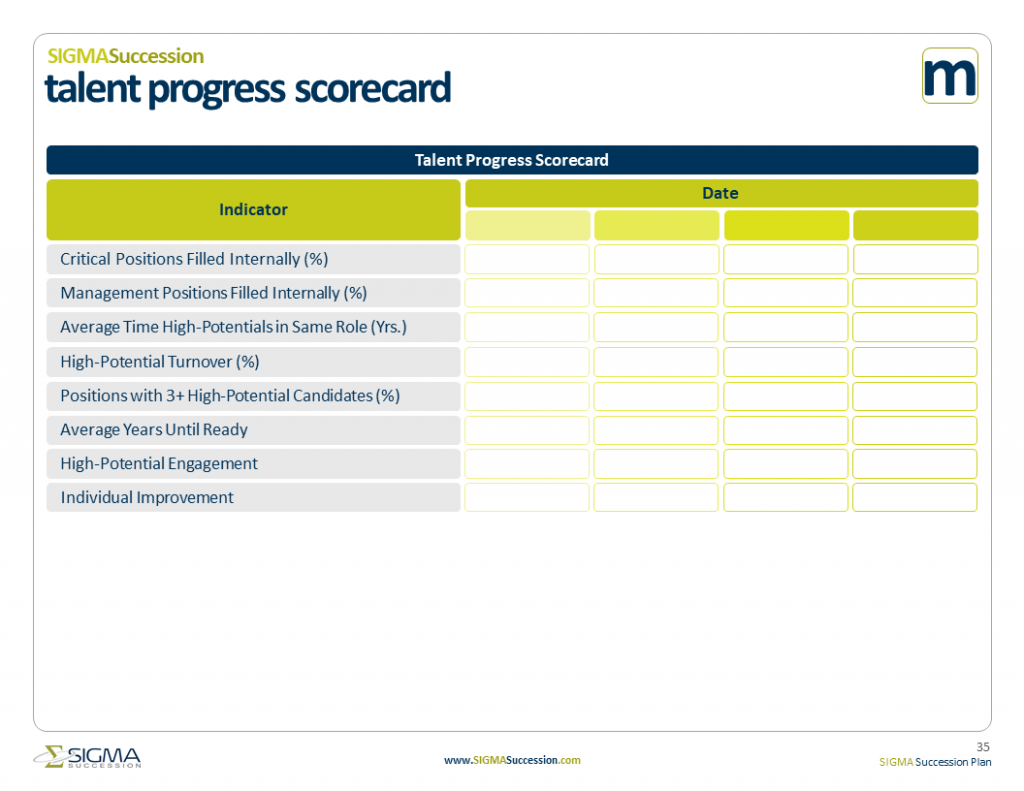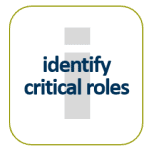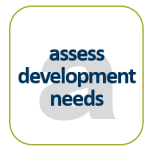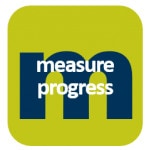How to Measure Progress in Succession Planning
Succession Planning Step 6: Evaluate the Success of your Succession Management
Succession management strategies aim to identify the next generation of leaders in your organization. Leaders who have the potential to fill key roles when the current personnel move on and, as a result, minimize the effect these inevitable changes have on business operations.
If you’ve been following our six-step succession planning process, you’ve already identified the critical roles to include in your succession plan, built a success profile for your critical role, nominated succession candidates to fill critical roles, and built a succession bench of future leaders. You’ve also assessed your succession candidates’ development needs and are working on the ongoing process of developing the talent in your succession pipeline.
A very important piece of any succession process is measuring and communicating progress. Unfortunately, this is something that very few organizations do—even those with a seemingly mature process.
We’ve provided some structure and tools to simplify your succession process and hopefully, we’ve taken a little bit of the intimidation factor out of succession by adding that structure and giving you some tools. But it’s an important point to note that we’re not done yet. One very important thing that very few organizations, even those with a seemingly mature succession process do not do well, is measuring and communicating that progress. It’s critical for succession planning, frankly, any leadership development, HR, any initiative that you’re doing to demonstrate value on an ongoing basis. This is going to make it easier to justify your budget when you’re asking for more budget and essentially, even more importantly, when you’re asking for executive’s time because you’re going to ask them to invest their time in this process. I think you need to demonstrate value to both them and the organization. And we do this essentially with our talent progress scorecard by looking for ways to measure value and communicate it in a way that makes sense and is meaningful to the entire organization.
A few of the things that are critical to measure are those critical positions that are filled internally and management positions that are filled internally. Those obviously go hand in hand. If you have the data and if you understand what it costs the organization to hire somebody externally, connect that knowledge with your data. Obviously, it’s very powerful to say from this year to last, we’ve increased the number of positions that we were able to fill internally by 30%. That’s very, very powerful. What’s even more powerful is we’ve increased those positions by 30% and we’ve saved the organization $275,000. If you can connect the trend with an actual dollar value, that’s going to have a significant impact in the credibility of your process. So, very, very important.
The next two pieces are the average time that your high potentials are in the same role and your high potential turnover. And it shouldn’t really be a surprise that these are very highly correlated. They are very closely related to each other. Your high potentials typically speaking are going to be more driven, they’re going to give more, but they’re also going to ask more from their role. Generally speaking, if high potentials are in a role for too long, and too long can be very different depending on that high potential, what happens is they start to look elsewhere. So, if you’re seeing a very high number of high potentials that are in the same role for a long period of time, you’re likely going to see a very similar trend in high potentials leaving the organization. And that’s very, very important. Again, from a cost perspective, if certain roles have a high training cost, attach that cost to your percentages. But essentially, we want these numbers to go down. If average time high potentials are in the same role has been 5.7 years, we obviously want to set goals and move those numbers lower and attach any dollar figure that we can.
The next piece is those critical positions. As I said earlier, from a best practice standpoint or from a gold standard, we want in an ideal world to have at least three successors for every role. And so we would identify all of our critical positions and essentially state how many of those positions have at least three-plus successors. And that’s where we want to get to, as I said, have reasonable expectations and communicate reasonable expectations with this data, but that’s where we want to get to and that’s where your leadership development processes are going to do.
The next piece and also closely related as well is average years till individuals are ready. If we look at our talent bench today, for example, a smaller organization with maybe a younger staff may have the average time to ready everybody be over five years. Obviously, we want that average time to be a little more reasonable and a little closer to a three-year timeframe.
Finally, these are just some examples of what you can measure and what you can communicate. What I would ask you to do if you take nothing else from the webinar is to look at what you can measure easily today, identify those numbers, and essentially set a calendar date to measure them again six months from now and again a year from now. Get in the habit. Even if it’s only one metric, get in the habit of looking for measurement and looking for ways to attach it to value and communicate it to your management team. Measuring and communicating early and often will ensure that you get the executive commitment and the resources that you need to expand the process. As I said, the focus of this is we want to start with one. We want to start small, have some early successes, communicate that value to the executive management team and then we have data to support the investment in launching this across the organization. That’s going to both give the perception of success, which is important, but we’ll also ensure that the process has success and the process continues to deliver value to the organization.
Like any human resources initiative, it is critical to demonstrate the value of your succession plan on an ongoing basis. This will make it easier to justify your budget, to ask for a budget increase and, perhaps even more importantly, to ask for executives’ time. Often, to get attention from the leadership team, you need to demonstrate value to them on an individual basis as well as to the organization.
How to Measure the Impact of your Succession Plan
Step 1: Use Metrics to Measure Success That Reflect Your Company Goals
The success of your plan will depend heavily on the measures you focus your attention on. The metrics you choose should reflect the goals of your succession plan, so be sure these are clearly defined and stated as part of your formal succession plan. There are two kinds of metrics you might consider when you evaluate the impact of your succession planning process:
Objective Metrics for Quantitative Measurement
Objective measures are those metrics you can put hard numbers to. These are often very compelling to various stakeholders, especially executive boards or investors. For instance, some of the most common examples include the percentage of positions you are able to fill internally or the number of years it takes for the average candidate to be ready for a new role. These are often the targets of succession goals and are generally reflected in your bottom line. Look to the data you already collect on hiring, promotions, and personnel retention for some ideas on where to get started.
Subjective Metrics for Qualitative Measurement
Subjective metrics are based on less easily-defined measures of success. They are often reflective of the way succession planning impacts employees and your company’s culture on a day-to-day basis. For example, some of the most common metrics include employee engagement and job satisfaction. Many companies already conduct engagement and satisfaction surveys, and these are a great source of data. You might also consider trying to evaluate how succession impacts your employees directly, including their personal development and the quality of the relationships they have with their leaders as a result of regular development conversations.
Regardless of the measures you choose, we recommend you decide early in the process and gather baseline data so you can see the true impact succession planning has on your company. Use our Talent Progress Scorecard to help guide your measurement.

Common Succession Planning Metrics
Note, the metrics included on this scorecard are commonly used measures, but they should be considered suggestions. Companies can and should customize their metrics to fit their needs. Above all, be sure to include a balance of objective and subjective measures to gain a more comprehensive picture of your success. Common succession planning metrics include:
- Critical Positions Filled Internally and Management Positions Filled Internally. These two measures obviously go hand-in-hand. And if you have the data, look for ways to incorporate costs into the scorecard. For example, if you know how much it costs to hire a manager externally (hiring costs, training costs, etc.), communicate this. It is certainly compelling to show that you are increasing your internal hires on a percentage basis; however, your process will have dramatically more credibility if it is attached to an actual dollar value of savings.
- Average Time High-Potentials are in Same Role and High-Potential Turnover.You may be surprised to learn that these two measures are highly correlated to each other. Why? Your high-potential employees are typically more driven individuals. And while that means you will get more from them, it also means that they will demand more from you. Generally speaking, if high potentials are in a role for too long (the definition of a “long” timeframe can vary depending on the individual, company, and industry), they will start to look for another organization that will provide them with more opportunity for movement. If you notice your high-potential personnel tend to be in the same role for a long time, you will typically see a similar trend in high potentials leaving the organization. Once again, showing savings from a successful reduction in turnover will help you demonstrate value.
- Critical Positions with 3+ Successors.This metric may be the simplest measure of the health of your succession initiatives. Ideally, you want to have at least three Level A candidates for each critical role—successors that are ready to move into the position, or who will be ready very soon. While this may seem like a daunting goal, it is important to take a long-term view. Start small and make demonstrable progress for a few positions, rather than trying to plan for every role at once. This is also a great measure of the effectiveness of your leadership development programs. A successful development program will show candidates progressing steadily up the readiness levels.
- Average Years till Ready.This is closely related to the metric above. Over time, you want to see this number decline, indicating that more candidates are closer to Level A readiness to step into their future role. Although a younger organization may initially trend on the high side (more than 5 years till ready) due to the makeup of your team, over time you should be working to decrease that average. This will demonstrate both increased preparedness for personnel changes in your organization, and successful implementation of your development program.
Step 2: Update Your Talent Progress Scorecard
The Talent Progress Scorecard should be updated regularly. Succession planning is a long-term process, which means it can have a long-term positive impact. It’s not enough to review a metric or two once and consider your plan a success or a failure. Schedule time in your calendar every six months to gather and summarize the data on your scorecard. Remember that the on-going talent development and employee growth inherent in a robust succession plan takes time, so you will be seeing the benefits of succession for years to come.
Step 3: Communicate The Results
Given that succession planning requires the engagement and efforts of employees at all levels of the organization, it’s important that the results of the process are shared widely. Communicating your results, regardless of what they say, demonstrates your commitment to succession planning and signals to your employees that it remains a priority for your company. Finally, consider distributing the numbers to your management team, executive board, investors, and employees alike.
Make Measuring and Communicating a Mandatory Part of Succession Planning
Tracking measurable progress indicators and regularly sharing the results with key stakeholders demonstrates the value of your succession plan and keeps its importance top of mind. When you’re just starting out, you might not like all the numbers, but if you set and communicate reasonable expectations from the beginning, you’ll be able to show year-over-year progress in time.
Get started today by looking at what you can easily measure now and begin gathering those numbers. Set a calendar reminder to review, compare, and communicate progress every six months. Even if you only track one metric, get in the habit of recording it, attaching a dollar value if possible, and conveying that to your stakeholders.
Measuring and communicating early and often will ensure that you get the executive commitment and resources you need for a successful succession planning initiative.
LOOKING FOR MORE?




Talk to Glen.
If you’re interested in learning more about SIGMA’s succession planning services, Glen is the guy for you. He knows our material inside and out, and can tell you first-hand stories of the work we’ve done with our clients. And just so you know, Glen doesn’t do sales – he does solutions. That might mean answering your questions, giving you our best tips and tricks, or pointing you to our FREE resources. Send him an email or give him a call! He’d love to chat with you.
[i]Time for a more holistic approach to talent risk. KPMG International. 2013






